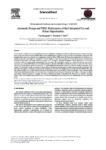
|
Axiomatic Design and TRIZ: Deficiencies of their Integrated Use and Future Opportunities
Yuri Borgianni, Dominik T. Matt
9th International Conference on Axiomatic Design, 2015
https://www.sciencedirect.com/science/article/pii/S2212827115007611
The first decade of 2000s has observed the diffusion of several contributions illustrating methods that combined Axiomatic Design (AD) and the Theory of Inventive Problem Solving (TRIZ). Such a kind of methodological matching seemed to flourish in both reference communities. The strength of the connection was found in the complementary objectives AD and TRIZ pursue. The former faces design tasks with a holistic view, oriented to schematize and simplify the design brief. However, despite the correct employment of AD axioms, the decoupling is not ensured of Functional Requirements’ and Design Parameterś matrices. As a consequence, the powerful problem solving capabilities of TRIZ can be employed in order to overcome extant contradictions. With this vision, AD is supposed to analyze the problem and structure it in the most convenient way, whereas TRIZ should solve the minimum amount of design conflicts that are intrinsically present in a case study. Nevertheless, despite the promising match between AD and TRIZ, no conjoint application strategy has emerged as a reference, neither in academia, nor in industry. Conversely, the quantity has dropped of Scopus-indexed scientific papers contextually making reference to both methodologies. The authors have attempted to investigate the reasons of the unsatisfactory evolution of the matching hypotheses between AD and TRIZ. The paper puts particular attention on the sources that manifest skepticism with respect to the combination of the two techniques. The conducted research remarks that unsuitable modelling has been so far employed to represent conflicts arising with AD through TRIZ terms. To the scope, the authors point out the potential advantages of exploiting poorly known instruments developed within TRIZ field. These tools are capable of facing the problem with a wider perspective and guide the user to perform troubleshooting in a more efficient way, also in the perspective of the second AD axiom.
|
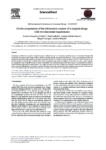
|
On the Computation of the Information Content of a Coupled Design with Two Functional Requirements
António Gonçalves-Coelho, João Fradinho, António Gabriel-Santos, Miguel Cavique, António Mourão
9th International Conference on Axiomatic Design, 2015
https://www.sciencedirect.com/science/article/pii/S2212827115007660
Computing the information content of coupled designs is seldom discussed in the literature, probably because the Axiomatic Design (AD) practitioners know that coupled design solutions should be avoided. On the other hand, Suh’s theorem 7 states, “the information contents of coupled and decoupled designs depend on the sequence by which the DPs are changed to satisfy the given set of FRs”. From this theorem, one couldbe temptedto conclude that the information contents of coupled designs cannot be computed, because theyhave not a “right” sequence for changing the values of the DPs in order to satisfy the given FRs. This misunderstandingcould then be used to stress that AD is not useful as a decision-making approach for coupled designs. Yet, coupled designs do exist, they are many timesunavoidableand their information contents can be computed, although this is oftenhard to perform. This paper presents the computation of the information content for the simple case of a 2-FR, 2-DP coupled design and illustrateshow this topic is related to Suh’s theorem 8 on independence and tolerance.
|
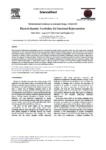
|
Physical Quantity Vocabulary for Functional Representation
Aibin Zhu, Ang Liu, Wei Chen, Stephen Lu
9th International Conference on Axiomatic Design, 2015
https://www.sciencedirect.com/science/article/pii/S2212827115008306
The importance of functional representation cannot be overstated. In current practice, especially in the very early design stages, functional requirements are often randomly proposed and loosely represented, largely by means of human language. This paper presents a new function representation method, which aims to improve the consistence and accuracy of functional representation. The core component of the method is a functional vocabulary, which is composed of a set of carefully selected physical quantities. Traditionally, physical quantity is often used to measure the property of a physical object. Relatively few efforts have been devoted to employing physical quantity to represent functional requirement. Furthermore, we prescribe the designer to follow the IDEF0 modeling method to organize a pair of two physical quantities in the format of “input (design range) → output (design range)”. Lastly, we propose to leverage the new method to support Axiomatic Design’s zigzagging process, the decomposition operation in particular. Multiple practical examples and a case study are presented in order to showcase how to use the proposed new method to solve real-world design problems.
|
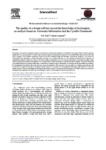
|
The Quality of a Design will not Exceed the Knowledge of its Designer; an Analysis Based on Axiomatic Information and the Cynefin Framework
Erik Puik, Darek Ceglarek
9th International Conference on Axiomatic Design, 2015
https://www.sciencedirect.com/science/article/pii/S2212827115007994
Knowledge is essential to the product designer. It contributes to a better understanding of the difficulties in a design. With the right knowledge, design errors can be recognised in the early stage of product design, and appropriate measures can be applied before these errors escalate and delay the project. The axiomatic complexity theory, part of the Axiomatic Design methodology, can warn the designer in this process by disclosing his lack knowledge to fully understand the design. The Cynefin framework is a sense-making framework that distinguishes an organisational situation within four contexts. The state of relevant knowledge is the most important parameter to determine the actual context where an organisation, system, or design process is currently located. When knowledge is acquired, the context changes. Axiomatic Design and the Cynefin framework are applied in this paper to characterise the relation between the quality of the design and the knowledge of its designer. It is investigated if one follows the other, and how prompt that relation is. The outcome is that the quality of a design is proportional to the accumulation of applied knowledge to the product design. Therefore the quality of the design follows knowledge implementation but does not exceed the level of relevant knowledge of the designer. Knowledge should not be restricted to the designers only. Other people, e.g. production- and maintenance-engineers, will also need the knowledge to take care of the product as the life cycle advances.
|
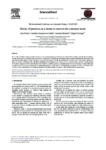
|
Theory of Practices as a Means to Uncover the Customer Needs
João Flores, António Gonçalves-Coelho, António Mourão, Miguel Cavique
9th International Conference on Axiomatic Design, 2015
https://www.sciencedirect.com/science/article/pii/S2212827115007672
Most of the Axiomatic Design research work focuses on the design as being a relation between the functional domain and the physical domain. Yet, the outcome of a successful design results from a definition of the functional requirements that accurately reflect the customer needs. The contribution of this paper is to help defining a theoretical framework to describe the customer needs and the related functional requirements, using the ‘Theory of Practices’ (TP). This theory highlights every human activity in terms of a set of actions called ‘practices’. Practices relate to the actions required to fulfill a need through three variables: a material support, a competence to perform the action and a meaning that arises from the action. TP also takes into account the surrounding functions of the practice, defining them according to the milieu of its usage. Thus, TP allows a clear identification of the customer needs to fulfill and facilitates the scrutiny of the related functional requirements.
|
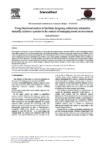
|
Using Functional Metrics to Facilitate Designing Collectively Exhaustive Mutually Exclusive Systems in the Context of Managing Return on Investment
Richard Henley
9th International Conference on Axiomatic Design, 2015
https://www.sciencedirect.com/science/article/pii/S2212827115008367
The objective of this paper is to test two hypotheses in the context of managing return on investment (ROI): (1) that a meaningful functional metric (FM) assigned to every functional requirement could facilitate the design of collectively exhausting mutually exclusive (CEME) systems and (2) that parent functional metrics should equal the sum of their children. FM at every level can facilitate objectively improving a system as well as tracing the root cause of underperformance within a system. Three attempts at designing a quantitative CEME system are critiqued to support or refute the hypotheses. The design attempts increasingly feature FMs with each iteration. Examination of the design attempts supports the hypotheses, however it is unclear whether the hypotheses would prove true outside of the context of ROI. The possibility of incorporating physical metrics into every level of future designs is discussed. This paper is intended to lead to future work testing a metric based decomposition hypothesis.
|
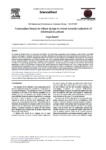
|
A Procedure Based on Robust Design to Orient towards Reduction of Information Content
Sergio Rizzuti
9th International Conference on Axiomatic Design, 2015
https://www.sciencedirect.com/science/article/pii/S2212827115007921
To manage the design matrix is an apparently easy thing to do. Discovering incongruences and converging at least towards a decoupled structure could suggest to designers that they have reached a sufficiently good starting point for the product under development. This is not sufficient. To be able to evaluate the information content of that solution is on the contrary an almost difficult activity because many relations between Functional Requirements and Design Parameters may not be completely defined deterministically. Eliminating bias and reducing variance remain the objective to be pursued. The paper discusses a procedure based on the Taguchi method to orient designers when verifying the influence that each design parameter has on the functional requirements. After the association of an Objective Function with one functional requirement or with a macro-functional requirement, the relation between the Objective Function and a set of design parameters can be identified from the Design Matrix. This can allow the designer to discern the best range of each parameter, analysing the Mean Value of the Objective Function and Signal to Noise Ratio. In the case of a conjoint influence of many design parameters on the functional requirement, it is important to verify the mutual interaction among the design parameters and evaluate the kind and level of interaction.
|
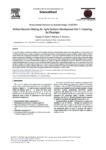
|
Robust Decision Making for Agile Systems Development Part 1: Exploring the Paradigm
Stephen G. Barker, Matthew P. Summers
9th International Conference on Axiomatic Design, 2015
https://www.sciencedirect.com/science/article/pii/S2212827115007635
The need for agility in operational systems within the defence enterprise and procurement domains has been identified by many authors, and over time, there have been a number of initiatives and programmes that have sought to identify the nature of agility, and the means by which it can be defined and employed within individual cases and scenarios. These have identified impediments to the successful realization of agile practices and methods, particularly the resilience of agile decision making throughout the conceptual understanding, design and implementation of the operational system. To further investigate the extent to which this process can be implemented in a robust and reliable manner, Cranfield University created the ‘Robust Enterprise-based Approach for Agility in Capability Through-life (REA2CT)’ framework, which provides a number of functional steps to institute a systems development lifecycle approach to producing agile solutions for use in networked systems and systems-of-systems. This paper briefly examines the Customer Need (CN) for the enterprise-based delivery of system (of systems) agility into the operational domain. Axiomatic Design (AD) theory is used to describe the REA2CT framework, identifying Functional Requirements (FRs) which might satisfy the CN for agility. Initial Design Parameters (DPs) are proposed to satisfy the FRs
|
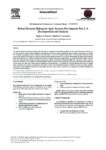
|
Robust Decision Making for Agile Systems Development Part 2: A Decomposition and Analysis
Stephen G. Barker, Matthew P. Summers
9th International Conference on Axiomatic Design, 2015
https://www.sciencedirect.com/science/article/pii/S2212827115007623
The need for agility in operational systems within the defence enterprise and procurement domains has been identified by many authors, and over time, there have been a number of initiatives and programmes that have sought to identify the nature of agility, and the means by which it can be defined and employed within individual cases and scenarios. These have identified impediments to the successful realization of agile practices and methods, particularly the resilience of agile decision making throughout the conceptual understanding, design and implementation of the operational system. To further investigate the extent to which this process can be implemented in a robust and reliable manner, Cranfield University created the ‘Robust Enterprise-based Approach for Agility in Capability Through-life (REA2CT)’ framework, which provides a number of functional steps to institute a systems development lifecycle approach to producing agile solutions for use in networked systems and systems-of-systems. This paper builds upon the description of the framework[1] by applying the Axiomatic Design (AD) theory to identify where complexity exists within the requirements and design activities that underpin the framework. Using this analysis, this paper identifies ‘pain points’ within the REA2CT framework, and suggests necessary improvements to facilitate the implementation of agility throughout the systems development lifecycle.
|
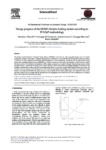
|
Design Progress of the DEMO Divertor Locking System According to IPADeP Methodology
Domenico Marzullo, Giuseppe Di Gironimo, Antonio Lanzotti, Giuseppe Mazzone, Rocco Mozzillo
9th International Conference on Axiomatic Design, 2015
https://www.sciencedirect.com/science/article/pii/S221282711500774X
The Iterative and Participative Axiomatic Design Process (IPADeP) deals with the early conceptual design stage of complex mechanical assemblies. It provides a systematic approach based on the theory of Axiomatic Product Development Lifecycle and aims to minimize the risks related to the uncertainty and incompleteness of the requirements, considering that the requirements will be refined and completed during the process. IPADeP has an iterative nature and is focused on the experience of the people involved in the design process. The functional requirements and the design parameters are conceived through brainstorming sessions and the concept selection is performed involving several experts through a Multi Criteria Decision Making technique. IPADeP has been adopted as methodology to address the early conceptual design stage of a subsystem of the DEMOnstration fusion power plant: the divertor cassette-to-vacuum vessel locking system. A first iteration was performed, resulting in the selection of a “high level” rough solution. According with IPADeP this paper presents an improvement of this solution, performing a new iteration of the process, since the system is ripe to proceed with the decomposition and zigzagging to the second level and new requirements are coming in from the development of the interfaced systems.
|
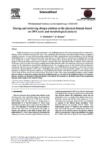
|
Storing and Retrieving Design Solution in the Physical Domain Based on DFX Tools and Morphological Analysis
Y. Moubachir, D. Bouami
9th International Conference on Axiomatic Design, 2015
https://www.sciencedirect.com/science/article/pii/S2212827115007751
Today the design of a new product has become a very challenging process, due to the growing number of aspects that a product needs to deal with during his life cycle. Like: regulations from authorities, expectations from costumers, company’s capabilities and more. To cope with this growing complexity, the field of design theories and methodologies is full of tools and methodologies that were developed to structure the design process. Axiomatic design is one those design methods that was built in the perspective of setting a rational framework where the design process must go through. The general idea of axiomatic design is to divide the design process into four domains: costumer, functional, physical and process domains. In this framework the designer needs to structure his design by mapping between those domains while in the same time respecting two fundamental axioms. (a) The independence axiom, (b) the information axiom. The zigzagging process for the transition between functional and physical domains starts by defining the functional requirement, from which the design parameters are driven and end up by selecting the physical solution. In this work a methodology for storing and retrieving physical solution for a given design parameters is proposed. The physical solutions are stored based on their level of attainment in regard to a number of predefined criteria. Most of those criteria can be derived from Design for X tools. Then using morphological analysis method, suitable physical solution is retrieved in regard to the level of attainment that we can reach in the predefined criteria. For illustrative purpose a program was designed to reflect the benefit of this method. This program was developed using Python programming language and his graphical user interface Tkinter.
|
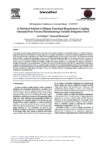
|
A Statistical Solution to Mitigate Functional Requirements Coupling Generated from Process (Manufacturing) Variables Integration-part I
Ali Mollajan, Mahmoud Houshmand
9th International Conference on Axiomatic Design, 2015
https://www.sciencedirect.com/science/article/pii/S221282711500829X
Utilizing the Axiomatic Design (AD) principles to develop a perfect product, design of a manufacturing system with minimal complexity is required. For the purpose of reducing the manufacturing system complexity, theoretically, it is preferred to integrate multiple Process Variables (PVs) of the product into a single process unit. However, due to significant presence of some active noise factors, this integration practice may result in failing to maintain the independence among some of Functional Requirements (FRs) of the product. This event is the result of statistical causal relationships unintentionally developed among a subset of the integrated PVs. In such a condition, the AD’s Independence Axiom cannot be successfully satisfied and reaching a system with minimal complexity is inconceivable, even though an uncoupled or decoupled system design is apparently presented. To mitigate this kind of FRs coupling generated from the PVs integration, this study proposes partial & semi-partial correlation analysis as a statistical solution to identify the most appropriate integration choices where integrating a subset of the PVs is inevitable. Furthermore, based on the Taguchi’s loss function, a quantitative criterion is established to fairly compare any two non-ideal manufacturing system designs and choose the one with relatively lower loss. The proposed approach explained in this study is verified based on hypothetical data.
|
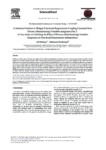
|
A Statistical Solution to Mitigate Functional Requirements Coupling Generated from Process (Manufacturing) Variables Integration-part 2: A Case Study on Clarifying the Effect of Process (Manufacturing) Variables Integration on Functional Requirements Independency
Ali Mollajan, Mahmoud Houshmand
9th International Conference on Axiomatic Design, 2015
https://www.sciencedirect.com/science/article/pii/S221282711500832X
In this part of the work, to illustrate the strength of the “partial and semipartial correlation analysis, as the proposed solution described in detail in part 1, we consider design problem of the manufacturing system of a given product based on a set of hypothetical data and show how to explore the most appropriate integration choices in which the (causal) dependencies of the concerned PVs are minimal. Based on the results of this study, we emphasize that incorporating the identified sensitive PVs into the integration process will eventually lead to coupling among a subset of the product’s FRs and isolation of these PVs is recommended as an ideal solution. However, sometimes, in the real world, for some of logical and/or technical reasons; such an ideal solution might be impossible. To deal with such a dichotomy, we use the Design of Experiments (DOE) methodology and offer the idea of controlling the values of the concerned PVs at specific levels to find the most appropriate condition (s) under which the minimal (causal) correlation between the integrated PVs may be achievable. On the basis of this idea, the worthwhile information the manufacturing system designers require to detect the safe levels at which the PVs can be integrated is achievable.
|
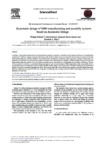
|
Systematic Design of SME Manufacturing and Assembly Systems Based on Axiomatic Design
Philipp Holzner, Erwin Rauch, Pasquale Russo Spena, Dominik T. Matt
9th International Conference on Axiomatic Design, 2015
https://www.sciencedirect.com/science/article/pii/S2212827115007696
To produce a high-quality product at the lowest possible price as quickly as possible, is certainly one of the biggest challenges of a manufacturing organization. In addition, supplier constraints and changes in the law for example makes it necessary for these enterprises to adapt continuously their manufacturing and assembly operations. The customization of products is increasing, and at same time, concepts of series and mass production are declining. This motivate large enterprises but also small and medium-sized enterprises (SMEs) to apply concepts of flexible and agile manufacturing and assembly systems to remain competitive and to react quickly to market changes and consumers’ preferences. The aim of this research is to develop a systematically design approach for such systems focusing on SME requirements which were carried out by a questionnaire survey of a sample of several manufacturing SMEs in Italy. Based on the survey results, Customer Attributes (CAs) are identified and then translated in Functional Requirements (FRs). Subsequently these FRs will be deduced into generally applicable Design Parameters (DPs) for supporting the design of flexible and changeable manufacturing and assembly systems for SMEs and to apply finally these design guidelines in a case study.
|
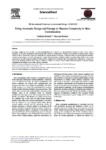
|
Using Axiomatic Design and Entropy to Measure Complexity in Mass Customization
Vladimir Modrak, Slavomir Bednar
9th International Conference on Axiomatic Design, 2015
https://www.sciencedirect.com/science/article/pii/S2212827115007726
Nowadays, complexity issues in mass customized manufacturing are considered as topical problem. Especially, product variety induced complexity is frequently discussed in recent research works. Our focus in this paper is based on an exploration of product variety induced complexity based on axiomatic design and entropy theories. For this purpose we propose to adopt previously developed complexity measures based on so called degree of disorder. Our approach consists of transformation of graphical representation describing relation between input components of assembly node and numbers of related product configurations into design matrix of coupled design. Subsequently, we apply the measures to enumerate product variety induced complexity. Finally, we analyze mutual relations between numbers of possible product configurations and obtained values of the complexity measures.
|
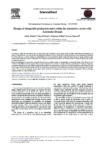
|
Design of Changeable Production Units within the Automotive Sector with Axiomatic Design
Jakob Weber, David Förster, Johannes Kößler, Kristin Paetzol
9th International Conference on Axiomatic Design, 2015
https://www.sciencedirect.com/science/article/pii/S2212827115007659
Corporations within the automotive sector are faced with major challengescaused among othersby high volatile demand fluctuations. An answer to this problem is given by flexible and changeable production systems which allow reactingefficiently to these fluctuations in demand. To achieve this aim, so called enablers for changeability have to be considered already during the design process of single production units within a whole production system. Furthermore the complexity of production units has to be reduced in order to obtain changeable and reliable manufacturing systems.
In the presented paper an approach is proposed with the aim to consider enablers of changeability in Axiomatic Design (AD). Moreover it is outlined which different interest groups within a single corporation have a direct or indirect influence on production unit design. Frequently complexity originates from many different attributes demanded by the single groups. On this basis, it is demonstrated how AD can help to enter into dialogue with the mentioned groups with the aim to lower the requirements of the production unit and to reduce complexity of the resulting design. This is done by using the design matrix which illustrates the dependencies between functional requirements (FRs) and design parameters (DPs) as a basis for discussion.
|
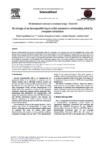
|
Re-design of an Interoperable Buyer-seller Automotive Relationship Aided by Computer Simulation
Pedro Espadinha-Cruz, António Gonçalves-Coelho, António Mourão, António Grilo
9th International Conference on Axiomatic Design, 2015
https://www.sciencedirect.com/science/article/pii/S2212827115007702
Business Interoperability has become an indisputable reality for companies who cooperate and strive for competitiveness. Supply chain management is one kind of industrial cooperation that relies on large integration and coordination by interoperability factors, which until now is missing a tool to identify and solve its problems. The present article presents a systematic methodology applying axiomatic design theory and computer simulation to: study the impact of interoperability problems on dyad performance in terms of supply chain and interoperability; and the re-design of cooperation from the findings of the performance impact study. A case study applied in an automotive supply chain is presented to demonstrate the application of this method, mapping from the actual interoperability conditions (“as-is”) to a scenario that guarantees higher levels of business interoperability (“to-be”).
|
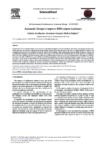
|
Axiomatic Design to Improve PRM Airport Assistance
Gabriele Arcidiacono, Alessandro Giorgetti, Michela Pugliese
9th International Conference on Axiomatic Design, 2015
https://www.sciencedirect.com/science/article/pii/S2212827115008525
Competition in the air transport market in recent years has prompted companies to search for products and services increasingly innovative and, at the same time, the decrease in development timing and the creation of resources devoted to the study of original technical solutions. One emerging important issue is to facilitate air travel for people with disabilities, elder and dependent people, setting the primary objective of preventing the emergence and spread of new barriers. This aspect is important both for the introduction of several mandatory requirements (rules, laws and regulations) and the increasing market share of this people category due to the aging of population. In this paper it is analyzed the study of the flow of PRM (Passengers with Reduced Mobility) departing, arriving and transiting through an airport terminal. The specific case study is based on the management process of passengers with special assistance for a major Italian tourist airport. The Axiomatic Design method is used to link the customers needs with all the process elements and boundaries: the infrastructure aspects, the limits imposed by security and the availability of appropriate resources (personnel and equipment). Finally some improvement suggestions are made to optimize the passage through the terminal and to ensure full accessibility of the considered environments.
|
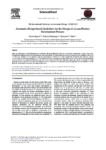
|
Axiomatic Design Based Guidelines for the Design of a Lean Product Development Process
Erwin Rauch, Patrick Dallasega, Dominik T. Matt
9th International Conference on Axiomatic Design, 2015
https://www.sciencedirect.com/science/article/pii/S2212827115007647
After the application of Lean Management in production, the Lean philosophy has been successfully implemented in many other areas. Through lean methods,processes in manufacturing were designed free of waste and through Lean Construction on-site installation follows the customer pace. Actually the Lean approach swaps also increasingly on indirect areas such as Engineering and Product Development. A rising cost sensitivity in product development, even shorter product life cycles and partly unsynchronized processes between R&D and manufacturing madeLean Product Development (LPD)interesting. This research showsan Axiomatic Design based approach to deduce a catalogue of design guidelinesfor the design of Lean Product Development processes. Based on these guidelines, generally applicable process templates for LPD should beelaborated for lean product development processes.
|
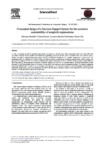
|
Conceptual Design of a Decision Support System for the Economic Sustainability of Nonprofit Organizations
Massimo Rinaldi, Chiara Parretti, Lorenzo Bartolini Salimbeni, Paolo Citti
9th International Conference on Axiomatic Design, 2015
https://www.sciencedirect.com/science/article/pii/S2212827115008483
In Italy, a continuous growth of nonprofit organizations has occurred in the last years. These organizations have been favoured by the concomitant reduction of direct public intervention (due to spending review) and the effect of the economic crisis on the business system. Despite their growth, nonprofit organizations present usually a critical lack in financial and economic management. In other words, their management does not consider all the factors related to economic balance, social success, reputation and promotion of their projects. The managerial role appears often to be overlooked compared to the actual needs and this results in a real limit for the growth and sustainability of these organizations. The present paper introduces a complete management review for the nonprofit using an Axiomatic Design based on the case study of one “Misericordia” (onlus) located in Florence. The proposed application leads to the definition of the minimum set of assessment tools that have to be considered and used as a Decision Support System (DSS) to support the management in a nonprofit organization. The DSS is developed as an integrated system of tools which allows a systemic approach tailored to meet the specificity of this kind of organization.
|
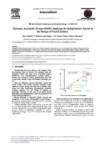
|
Dynamic Axiomatic Design (DAD): Applying the Independence Axiom in the Design of Social Systems
Reza Sheikh, Mohammad Abbasi, Ali Abbasi Talaei, Mina Tahmasbi
9th International Conference on Axiomatic Design, 2015
https://www.sciencedirect.com/science/article/pii/S2212827115007714
Compared with mechanical systems (fixed and flexible systems), social systems are more dynamic and complex. Because of human participation and interdependence, social system behaviour is not easily predictable, and the Independence Axiom cannot be easily applied. In this work we take time as a variable and adopt the dynamic axiomatic design (DAD) to account for the dynamic nature of social systems.
|
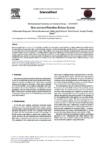
|
Heat-activated Parachute Release System
Guðmundur Bragason, Steinar Þorsteinsson, Rútur Ingi Karlsson, Nico Grosse, Joseph Timothy Foley
9th International Conference on Axiomatic Design, 2015
https://www.sciencedirect.com/science/article/pii/S2212827115008197
Release of a parachute at the apex of a rocket flight is a problem for every amateur rocket enthusiast. Existing commercially available methods all require the use of gunpowder, which can have licensing and safety complications depending upon the local laws. Axiomatic design analysis has shown that there is also high information content in this method. Users must precisely calculate the amount of black gunpowder to be used based upon altitude and rocket geometry. At the highest altitudes, gunpowder combustion gases are insufficient due to the low ambient pressure, so CO2 expansion actuation is used instead. These solutions using CO2 have lower information content, but are still activated using gunpowder and dependent upon altitude. Our analysis has led to the technique of using heat-activated materials as a CO2 valve release, a solution with lower information content. This design works with all sizes of amateur rockets up to Tripoli Rocketry Association Class 3 without knowledge of rocket apex altitude.
|
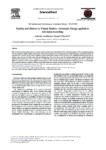
|
Reality and Illusion in Virtual Studios: Axiomatic Design Applied to Television Recording
Gabriele Arcidiacono, Pierpaolo Placidoli
9th International Conference on Axiomatic Design, 2015
https://www.sciencedirect.com/science/article/pii/S2212827115008471
This work presents the design project of a camera support structure for a Virtual Studio (VS). A brief description of VS is presented regarding both the equipment needed and the issues related to the correct matching of real foreground with virtual background. Given this scenario, an important role is covered by the camera supporting structure that allows a more correct execution of the standard filmmaking shots such as: medium shot, close-up, low/high angle shot and tracking shot. The work shows how the structure design has been carried through the Axiomatic Design focusing on how a coupled and a redundant design have been identified and solved. The approach has led to a significantly different design from classic camera support structures such as Cranes and Jibs and advanced Motion Control Rigs used in cinematography. The complexity reduction compared to Motion Control Rigs makes the designed structure suitable for a low budget VS set up.
|
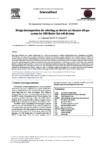
|
Design Decomposition for Selecting an Electric arc Furnace Off-gas System for SDI Butler Flat Roll Division
A.J. Spencer, D.S. Cochran
9th International Conference on Axiomatic Design, 2015
https://www.sciencedirect.com/science/article/pii/S221282711500846X
This paper illustrates how systems requirements (i.e., safety) are decomposed to define manufacturing process requirements and design. Steelmaking is an energy intensive process; utilizing vast amounts of electricity, oxygen, and natural gas to liquefy scrap steel. While the electric arc furnace process is used extensively around the world to melt steel, it is inefficient. Hot gases are lost to fume collection systems and not reused in other parts of the process. Unknown water leaks inside a furnace can potentially result in catastrophic explosions which can injure personnel or damage equipment. Carbon monoxide (CO), the largest gas by product of steelmaking, has caused several large scale explosions globally resulting in large repair bills. A system to not only detect gases present in the gas steam exiting the furnace but to quantify the amounts being produced can lead to ensuring the furnaces are safer for employees to work around. This paper will break down the decision process in selecting the hybrid probe-laser off-gas system by means of axiomatic design decomposition at an American mini-mill located in Butler, Indiana using the Collective System Design (CSD) methodology utilized at IPFW Center of Excellence in Systems Engineering.
|
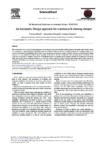
|
An Axiomatic Design Approach for a Motorcycle Steering Damper
Cosimo Monti, Alessandro Giorgetti, Andrea Girgenti
9th International Conference on Axiomatic Design, 2015
https://www.sciencedirect.com/science/article/pii/S2212827115008495
The main function of a motorcycle steering damper is to stop the steering oscillations that could be generated during the vehicle motion around the steering axis, a typical motorcycle instability known as wobble or shimmy. However, in normal conditions, the damping function of the device on the steering can be harmful, causing rider’s wearying and thus decreasing his comfort and safety. Moreover, a recent trend of steering dampers is the size optimization with a higher integration of the device into the steering head and consequent greater constraints on its dimensions. In this paper, a model of motorcycle is considered to define the damping factors generally required on the steering axis to ensure safety and comfort in all conditions. Moreover, an Axiomatic Design approach is used to analyze the critical aspects and to propose an innovative architecture for a steering damper based on magneto-rheological (MR) fluid and fully integrated in the steering head of the motorcycles.
|
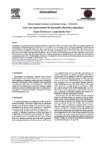
|
Low-cost Spectrometer for Icelandic Chemistry Education
Gunnar Óli Sölvason, Joseph Timothy Foley
9th International Conference on Axiomatic Design, 2015
https://www.sciencedirect.com/science/article/pii/S2212827115008318
Spectrometers are common analytical instruments in Chemistry. Ultraviolet-visible (UV-Vis) spectroscopy is the most commonly applied instrumental analysis technique being used at universities in the United States for the last three decades. Due to the popularity of spectroscopy and reduced budgets for undergraduate laboratories, there is great interest in low-cost, Do-It-Yourself spectrophotometers. This paper presents an implementation devised with axiomatic design principles for an affordable (sub $1000) spectrometer. This design can be fabricated in a local Fab Lab using common off the shelf components and material to serve as a rigorous, analytical and teaching tool with a lifespan of at least 5 years. Due to a flaw in the concept of the optical path of the device, consistent measurements on absorption spectra could not be made comparable to a commercial equivalent. Even with this limitation, the device is still capable of serving its original purpose by measuring light source spectra and absorption of a selected wavelength to demonstrate Beer’s law.
|
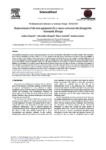
|
Improvement of the Test Equipment for a Stress Corrosion Lab through the Axiomatic Design
Andrea Girgenti, Alessandro Giorgetti, Marco Anselmi, Arianna Scatena
9th International Conference on Axiomatic Design, 2015
https://www.sciencedirect.com/science/article/pii/S2212827115008264
Choosing the best material for a given design environment is more and more important in the modern Oil and Gas industry. This issue affects the economical sustainability and the integrity of the oil field equipment since the aqueous environment where there are hydrogen sulphide or carbon dioxide is highly corrosive. Many experiments have been drawn out in order to investigate the strength of common carbon steels and corrosion resistant alloys in different conditions and many others are needed; nevertheless achieving reliable and accurate data for these kind of tests is quite difficult because of both the complexity of the subject and the lack of a standard test procedure among laboratories. Another difficulty is represented by the need to customize the test device and the system whose they take part in order to overcome several degrees of freedom which are present and could affect the accuracy of the results. At first the Axiomatic Design theory is used for identifying those critical aspects of the standard proof ring device which may affect the results from stress corrosion tests. After, this method is employed to drive and evaluate various equipment customizations to achieve results in compliance with the NACE TM0177 regulation.
|
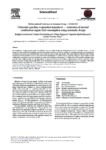
|
Ultrasonic Gasoline Evaporation Transducer – Reduction of Internal Combustion Engine Fuel Consumption using Axiomatic Design
Bergþór Lár Jónsson, Garðar Örn Garðarsson, Óskar Pétursson, Sigurður Bjarki Hlynsson, Joseph Timothy Foley
9th International Conference on Axiomatic Design, 2015
https://www.sciencedirect.com/science/article/pii/S2212827115008203
The possibilities of improving fuel combustion efficiency have been studied deeply, for environmental as well as economic reasons. It is well known that better combustion is linked to consistent fuel droplet size that is as small as possible. In this paper ultrasonic fuel atomization is investigated as an alternative to traditional fuel systems which are highly coupled and complex. The proposed design is the Ultrasonic Gasoline Evaporation Transducer (UGET), devised using Axiomatic Design principles. The UGET replaces a standard carburetor’s highly sensitive venturi mechanism by vaporizing the fuel with piezoelectric crystals that oscillate at a high frequency (1.7 MHz). The UGET produces much finer, more even fuel vapor compared to that of a standard carburetor, expect to result in a more complete combustion by an internal combustion engine. Due to the absence of small apertures, the UGET is less vulnerable to congestion risks than a fuel injection system or a carburetor. The currentprototype vaporizes up to 40 g min−1 of fuel to operate a 170 cc 4-stroke engine with performance comparable to a normal carburetor.
|
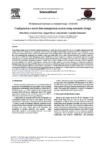
|
Configuration a Meter Data Management System using Axiomatic Design
Petru Dusa, Cristian Novac, Eugen Purice, Oana Dodun, Laurentiu Slătineanu
9th International Conference on Axiomatic Design, 2015
https://www.sciencedirect.com/science/article/pii/S221282711500801X
Smart grids are energy networks that can monitor energy flows providing to consumers and suppliers information on real-time consumption. The EU intends to replace at least 80% of electricity meters with smart meters by 2020. Meter data management (MDM) is a critical component to realizing the potential of smart grids infrastructure and facilitates the distribution of the meter data across the utility enterprise by consolidating reading data from multiple collection systems into one MDM. Most meter data management systems, on the market, integrate multiple collection systems, calculate billing determinates and do validation, estimation and editing of meter data. When IT departments from utility industry arrive to implement a meter data management solution, it’s critical to understand the key features, true system capabilities which distinguish each, and to understand whether those features can perform, minimize the number of functionalities or eliminate redundant functionalities. As a result, configuration a MDM system in an efficient manner with optimal number of functionalities is a hard work. This paper explores Axiomatic Design as an approach to configure an optimal meter data management system solution tailored to the client needs.
|
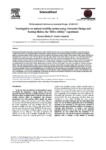
|
Investigation on Optimal Mobility System using Axiomatic Design and Scoring Matrix: the “Drive Ability” Experiment
Riccardo Barbieri, Gianni Campatelli
9th International Conference on Axiomatic Design, 2015
https://www.sciencedirect.com/science/article/pii/S2212827115008252
The increase in the global population and the improvement of the life style of many poorer countries are leading to a relevant growth for mobility. Such increase in circulating vehicles would have a negative impact on environment pollution. Given this picture, the traditional internal combustion engine vehicles could not be the best solution for the future personal mobility. This problem is really critical especially for high population density cities, such as Firenze (Italy), where the large number of circulating vehicles must use a very old infrastructure that is constrained by all the historical sites widespread in the city, that are also very sensitive to air pollution. However, choosing between the possible mobility solutions could not be an easy task, also if using a structured approach. The challenge is, in fact, to assess a large number of variables for different solutions, process that could lead to a situation where all scenarios show pros and cons, and so all matrices will be decoupled and will not be possible to define which solution is the best. The aim of this paper is to define a new approach, based on a Scoring Matrix and on the Axiomatic Design, which overcomes this issue by using a multi-criteria evaluating strategy. This new approach has been tested on the city of Firenze (Italy) where the optimal mobility paradigm has been assessed from the sustainability point of view. As a result, the wireless charging system has been identified as the most suitable for the city and citizen needs. In addition, Axiomatic Design has been used to define how to overcame the technological barriers for its introduction: wireless charging introduction, in fact, could experience a stop due to the efficiency loss in case of misalignment. In this paper, the scenarios are introduced using the Axiomatic Design decomposition tree and the solution has been tested by using the information axiom.
|
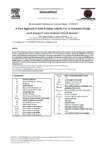
|
A First Approach to Solar Aviation with the Use of Axiomatic Design
Joan B. Rodriguez, Carlos Gil Morales, Efrén M. Benavides
9th International Conference on Axiomatic Design, 2015
https://www.sciencedirect.com/science/article/pii/S2212827115008288
In most of the existing solar airplanes, solar cells are allocated on the top of the wing. From the perspective of Axiomatic Design, this configuration creates a dependency between power, endurance and wing load. The aim of this article is to present a preliminary formulation of the design problem with quantitative transfer functions to which Suh’s principles are then applied. The formulation of the design problem results in a set of two main functional requirements (FR), endurance and excess of specific mechanical power, which the laws of physics relate to their (DP) through the transfer functions. This formulation is exposed in a way that facilitates its use as an example for teaching Axiomatic Design. The analysis of the DP tendencies according to Axiomatic Design principles depicts the technological limits of solar aviation, focusing on how the aforementioned dependencies constraint the basic topology of solar aircraft to a large range of potential missions in terms of endurance and excess of specific mechanical power.
|
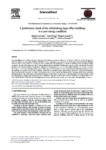
|
A Preliminary Check of the Refurbishing Large Office Buildings to a Zero Energy Condition
Miguel Cavique, João Flores, Miguel Amado, António Gonçalves-Coelho, António Mourão
9th International Conference on Axiomatic Design, 2015
https://www.sciencedirect.com/science/article/pii/S2212827115008136
The sustainability in the building industry is currently a trend of the governmental policies in the EU and the USA. In the EU, the target for 2020 is to achieve net-zero energy buildings (NZEB) for the new constructions, as enforced by the 2010 recast Energy Performance Building Directive. On the other hand, it is necessary to make decisions about the technologies to include in buildings when undergoing a major renovation. The aim of this paper is to help to define guidelines about the feasibility of achieving a near-zero energy condition on the existing building stock using the Axiomatic Design theory. Applying this design process to a set of existing office buildings, it is possible to evaluate the energy use of renovated buildings. In the context of this study, the renovation focuses on the reduction of internal loads, isolating the facade and applying new efficient systems in each building. Following the decoupled design matrix of such renovation, it is possible to obtain the fuzzy functions of the energy use. In reality, these functions are the fuzzy sum of contributions to the energy use of the design parameters applied according to the design matrix. The membership function of the energy use allows in turn determining the information content of each type of building, for a design limit of 100 kW·h/(m2· a) of primary energy use. It is found that a renovated building using a photovoltaic system area of about 20% of the floor area of the building allows achieving null information content, or in other words a 100% probability of success.
|
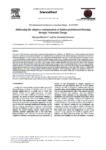
|
Addressing the Adaptive Customization of Timber Prefabricated Housing through Axiomatic Design
Marianna Marchesi, Ian Alessandro Ferrarato
9th International Conference on Axiomatic Design, 2015
https://www.sciencedirect.com/science/article/pii/S2212827115006058
|
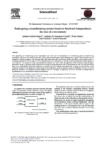
|
Redesigning a Manufacturing System Based on Functional Independence: The Case of a Tree Nursery
António Gabriel-Santos, António M. Gonçalves-Coelho, Pedro Santos, João Fradinho, António Mourão
9th International Conference on Axiomatic Design, 2015
https://www.sciencedirect.com/science/article/pii/S2212827115007684
The engineering of manufacturing systems encompasses two main areas of development: the manufacturing process (manufacturing technologies, and flow and handling of materials), and the production management (flow of information – signals). These two areas must be designed to perform according to the expressed needs. This paper shows that the Axiomatic Design (AD) theory can be used to analyse a manufacturing system to find the origin of the lack of productivity, and, subsequently, to redesign a solution avoiding the weakness points. A case study of a tree nursery of a large wood production enterprise was used to show the application of the axiomatic design principles, particularly through analysing the design equation and including new design parameters with the independence in mind. The redesign solution based on the independence of functions promoted the simplification of the information (signals) flow, avoiding the identification of each production element, and avoiding errors, which increases the productivity and the production volume, by elimination of waste of time in production operations. The proposed solution brought results that encourage the application of AD to increment the productivity of manufacturing systems, in alternative to expensive investments.
|
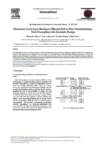
|
Momentary Local Laser Heating in Thermal Roll-to-Plate Nanoimprinting; Node Decoupling with Axiomatic Design
Masayuki Nakao, Ken Takahashi, Keisuke Nagato, Kenji Iino
9th International Conference on Axiomatic Design, 2015
https://www.sciencedirect.com/science/article/pii/S221282711500760X
The independence axiom of axiomatic design to decouple interference among functional requirements might be effective in designing new processes. This paper reports an application of this concept to our design of roll-to-plate thermal nanoimprinting using laser heating. The authors, instead of heating an entire roller, casted a laser beam through a glass roller to a thin metal film on the mold to produce a momentary and local heat source. The mold immediately cooled down after the laser heating and the patterned resin did not reflow back to flat shapes; we succeeded in decoupling the node of heating and cooling.
|
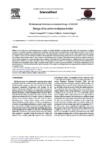
|
Design of An Active Workpiece Holder
Gianni Campatelli, Lorenzo Sallese, Antonio Scippa
9th International Conference on Axiomatic Design, 2015
https://www.sciencedirect.com/science/article/pii/S2212827115008008
Milling is one of the most used machining processes thanks to its high flexibility and high achievable quality. The performance of milling machines is constantly increasing, improving the convenience and increasing the competitiveness of this operation. However, the trend of performance improvement has found a technological limit: self-excited vibrations due to the dynamics of the system machine-workpiece-tooling (i.e. chatter). Chatter is the most dangerous dynamic phenomena that could happen during milling; due to its regenerative nature, it could lead the machine and the tooling system to a heavy fault or to the disruption of the workpiece. This paper develops an active workpiece holder that avoids chatter vibrations by a smart actuation of the workpiece. The design of the workpiece holder is a difficult task due to strict product requirements and the need to create a decoupled structure. The decoupling of the structure is a fundamental requirement of the product because this affects the controllability of the system. Axiomatic Design Theory is used to support the definition of the product requirements and the product architecture. After the definition of the optimal structure of the workpiece, the design features are integrated in order to obtain a functional decoupled structure.
|
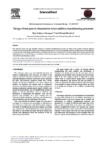
|
Design of Test Parts to Characterize Micro Additive Manufacturing Processes
Mary Kathryn Thompson, Michael Mischkot
9th International Conference on Axiomatic Design, 2015
https://www.sciencedirect.com/science/article/pii/S2212827115008240
The minimum feature size and obtainable tolerances of additive manufacturing processes are linked to the smallest volumetric elements (voxels) that can be created. This work presents the iterative design of a test part to investigate the resolution of AM processes with voxel sizes at the micro scale. Each design iteration reduces the test part size, increases the number of test features, improves functionality, and decreases coupling in the part. The final design is a set of three test parts that are easy to orient and measure, and that provide useful information about micro additive manufacturing processes.
|
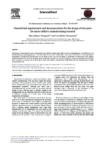
|
Generalized Requirements and Decompositions For the Design of Test Parts for Micro Additive Manufacturing Research
Mary Kathryn Thompson, Line Harder Clemmensen
9th International Conference on Axiomatic Design, 2015
https://www.sciencedirect.com/science/article/pii/S2212827115008343
The design of experimental test parts to characterize micro additive manufacturing (AM) processes is challenging due to the influence of the manufacturing and metrology processes. This work builds on the lessons learned from a case study in the literature to derive generalized requirements and high level decompositions for the design of test parts and the design of experiments to characterize micro additive manufacturing processes. While the test parts and the experiments described are still work in progress, the generic requirements derived from them can serve as a starting point for the design of other micro additive manufacturing related studies and their decompositions can help structure future work.
|
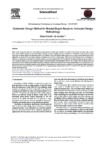
|
Systematic Design Method for Bonded Repair Based on Axiomatic Design Methodology
Elham Fouladi, Ali Abedian
9th International Conference on Axiomatic Design, 2015
https://www.sciencedirect.com/science/article/pii/S2212827115008392
When cracks along rivet holes and other highly stressed regions of mostly aged aircrafts are found, usually repairs are being made to arrest these cracks. Patches provide an innovative repair technique, which can enhance the way aircrafts are maintained. Composite patch design along with axiomatic design technique deployment is a possibility. Axiomatic Design (AD) is expressed as a system design methodology that is applicable to creation of a new design, analysis and improvement of an existing design. While, here Patch Design system architecture is expressed as application of principles of axiomatic design on top level requirements with consideration of design parameters and constraints. A new conceptual repair process for damaged structures is being developed with zigzagging between AD domains. The full design matrix of repair process will be formed by decomposition of the Composite Patch Repair and systematic step by step presentation of design process. This involves the selection of adhesive material and its thickness, determination of patch dimensions, selection of patch material, repair instructions and finally stress analysis method. It is anticipated that the suggested repair design process will be a useful tool for engineers involved in aircraft maintenance units.
|
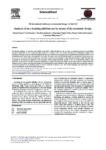
|
Analysis of an E-learning Platform use by Means of the Axiomatic Design
Oana Dodun, Ema Panaite, Nicolae Seghedin, Gheorghe Nagîţ, Petru Duşa, Gabriela Neştian, Laurenţiu Slătineanu
9th International Conference on Axiomatic Design, 2015
https://www.sciencedirect.com/science/article/pii/S2212827115008185
The Moodle platform, which was proposed and initially developed by Martin Dougiamas, improves the didactic process by helping professors to generate and publish online content. This enables more intense interaction and collaboration during the design of educational curricula. The use of Moodle platforms is continuously increasing and the platform itself is under continuous development. The improvement and use of the Moodle platform correspond to a design process and therefore can be analyzed using axiomatic design principles. In this paper, customer needs were taken into consideration, functional requirements were formulated and design parameters specific to the use of the Moodle platform were determined in the context of the didactic activities deployed in a technical university. The analysis of the way in which the content of Moodle platform is used by means of the axiomatic design tools could facilitate a clearer definition of the customer needs and more adequate inclusions of documents and tools on the platform content in order to satisfy the customers’ needs. The analysis highlights some directions in order to improve the efficiency of the use of the Moodle platform.
|
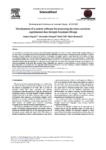
|
Development of a Custom Software for Processing the Stress Corrosion Experimental Data through Axiomatic Design
Andrea Girgenti, Alessandro Giorgetti, Paolo Citti, Marco Romanelli
9th International Conference on Axiomatic Design, 2015
https://www.sciencedirect.com/science/article/pii/S2212827115008239
The economical sustainability and the integrity of oil field equipment depend on the choice of the best material for the working conditions. In oil wells, many environmental corrosion phenomena take place and affect the structural integrity of metallic parts and equipment. In order to investigate material properties in presence of corrosive environments and applied stresses, many laboratories have arisen and many experimental techniques have been developed and setup in order to collect data about the behaviour of corrosion resistant alloys. Available data are traditionally gathered into text files which are difficult to analyze and process since a widespread commercial software does not exist for automated data processing and reporting. Each laboratory has to develop their own tools in order to perform the data post processing for stress corrosion experiments. In this paper, the Axiomatic Design method has been employed in order to develop a custom software for data post processing of the stress corrosion tests. The application of the Axiomatic Design has a key role in defining the software architecture, avoiding useless solutions and improving code optimization from the earliest phases.
|
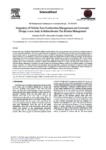
|
Integration of Holistic Non-conformities Management and Axiomatic Design: A Case Study in Italian Income Tax Returns Management
Fernando Rolli, Alessandro Giorgetti, Paolo Citti
9th International Conference on Axiomatic Design, 2015
https://www.sciencedirect.com/science/article/pii/S2212827115008355
In the last few years, the Italian Welfare State has suffered from the effects of the serious economic crisis. The crisis has hastened the need to cut down the public expenditures. The current study focuses on the improvement of the effectiveness, the efficiency and the inexpensiveness of those processes related to the management of the tax services provided by medium/large withholding agents. The proposed method aims to improve handling Non-Conformities in a process, by introducing a project plan based on the Axiomatic Design methodology. This method aids in producing a set of robust planning solutions for a wide range of issues. Starting from the reported issues emailed to the Customer Support Service of the process, it is possible to catalogue the encountered issues through an Holistic Non Conformity Reduction approach, so that introduces such a level of abstraction necessary to define Non-Conformities of process in a basic and logical way. Then, we turn to the Axiomatic Design methodology in an iterative way and we find the set of planning solutions, which are more logically suitable to the operating context. In practice, this allows innovative and sustainable clustering approaches, making the development of proactive lessons learned possible. These can be used both in the development and in debugging of the information systems supporting the process management, ensuring an enhanced robustness against the frequent changes related to legislative measures and the forecasts adopted.
|
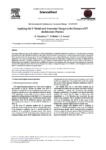
|
Applying the V Model and Axiomatic Design in the Domain of IT Architecture Practice
D. Tarenskeen, R. Bakker, S. Joosten
9th International Conference on Axiomatic Design, 2015
https://www.sciencedirect.com/science/article/pii/S2212827115007945
This paper applies and discusses the principles of Axiomatic Design for changing IT architecture in health care. It presents three case studies positioned in the field of Enterprise architecture that explore how IT architects, as professionals, manage change and re-design the structure of the IT systems in line with strategic goals. The research approach was to use a light modelling tool, Ampersand, for modelling the Enterprise architecture. Two types of models stand out: Type 1 Strategic IT models in which higher strategic goals are related to requirements for applications and Type 2 Technical management of systems models in which technical risks and risk of system failure in the current IT infrastructure were modelled. To bridge the views of different IT experts in the organization this work uses the customer domain, the functional domain and the physical domain from Axiomatic Design in an extended example in the paper. The V Model is used to bridge the models, and then it is extended with Axiomatic Design principles.
|
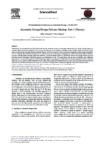
|
Axiomatic Design/Design Patterns Mashup: Part 1 (Theory)
John Thomas, Pam Mantri
9th International Conference on Axiomatic Design, 2015
https://www.sciencedirect.com/science/article/pii/S2212827115008501
Traditionally, the Axiomatic Design (AD) Framework aids the top-down design in at least three fundamental ways. Firstly, it helps capture the requisite, high-level systemic-property of a given design. Secondly, given an ensemble of candidate designs, it helps evaluate the designs. Finally, when viewed from the Axiomatic Design/Complexity Theory (AD/CT) framework, it helps contain and manage the ensuing design complexities. Likewise, from the other end of the spectrum, diverse industries have been collecting and cataloging successful Design Patterns (ÐP) in a bottom-up sense. A Design Pattern formally captures the solution to a recurrent design problem in a given field. There is now enough critical mass from both these streams-of-thought to effectively engage in an intellectual mash-up. This paper helps motivate, plan and initialize such a deliberate mash-up. Part 1 surveys both approaches from a knowledge architecture perspective to help frame the top-down approach as the V-model; the bottom-up as the Λ-model; and the integrated as the N-model. It then addresses the central economic issue of our age, namely the proper division of labor between human and machine and locates it in the context of design. Part 2 illustrates the approach using Cybersecurity Patterns.
|
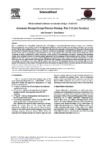
|
Axiomatic Design/Design Patterns Mashup: Part 2 (Cyber Security)
John Thomas, Pam Mantri
9th International Conference on Axiomatic Design, 2015
https://www.sciencedirect.com/science/article/pii/S2212827115008513
Part 1 established the theoretical framework for undertaking a top-down/bottom-up mash-up between the Axiomatic Design/Complexity Theory (AD/CT) and the Design Patterns (ÐP) framework. It synthesized an integrated N-model from the top-down V-Model and its antipodal/bottom-up Λ-model. Part 2 illustrates the approach in the domain of Cybersecurity. Recent trends in Cybersecurity indicates that our modern socio-technical systems are increasingly vulnerable to both external as well as internal threats. As the cost of defending our cyberstructures as well as the payoffs from successful attacks keeps rising, the cost of launching an attack simultaneously keeps decreasing. Cyber warfare is fundamentally asymmetric. Designing and managing modern socio-technical systems will demand greater appreciation for the language of threat-patterns and its defence. This paper applies the N-model to arrive at a generic pattern-language compositional technique using the Axiomatic Design Matrix. It then shows how one may splice the FR↔DP mappings with the FR↔ÐP mappings. Transcending the technical and into the socio, it is increasingly clear that wars of the future will be fought in the crucible of each individual human mind. Cognitive Biases are the patterns of weaknesses in this domain. The paper illustrates that patterns of cognitive biases can lead to patterns of cyber insecurity.
|